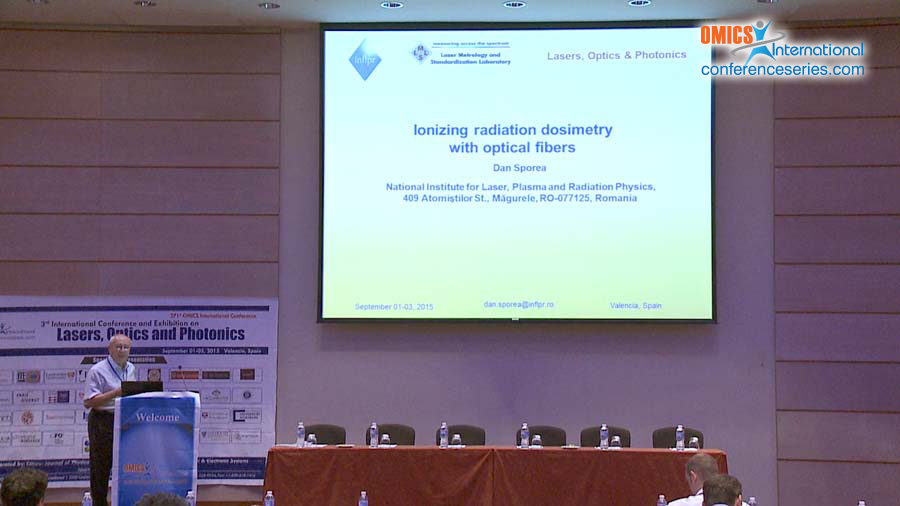
Dan Sporea
National Institute for Laser, Plasma and Radiation Physics, Romania
Title: Ionizing radiation dosimetry with optical fibers
Biography
Biography: Dan Sporea
Abstract
Optical fibre based sensors constitute an exciting alternative to classical optical and/or electric sensors as they provide several exceptional advantages: small dimensions; low mass and footprint; multiplexing capabilities (temporal, wavelength); immunity to various hazards (fire, explosions) and electromagnetic interferences; extended communication bandwidth; possibility to handle multi parameter distributed configurations with remote control. Of a special interest is the use of intrinsic or extrinsic optical fibre sensors under irradiation conditions, as their performances in such environments has to be evaluated in relation (i) to their radiation reliability (how well they keep their basic characteristics unaltered by the radiation-matter interaction) or (ii) to the way they can act as radiation detectors/monitors. As radiation detectors or monitors, optical fibre sensors found their use in niche application such as: particle accelerators, synchrotron installations, free electron lasers for scientific or industrial purposes (as transducers for dose rate, total dose, beam losses, beam profiling, and reconstruction of charge particle tracks); neutron, gamma-ray, beta ray distributed dosimetry; water and soil contamination monitoring. In the medical field, optical fibre sensors were applied in the dosimetry of ionizing radiation; dosimetry in computed tomography; sterilization of instrumentation. This talk describes different types of optical fiber based sensors for radiation monitoring and dosimetry. In the introduction various radiation effects on optical fibers and optical fiber based sensors will be presented and compared. The parameters of interest for these sensors such as: Sensitivity to radiation; energy dependence; recovery/ stability; dynamic range and linearity will be discussed. Our results on the use of such sensors (intrinsic or extrinsic) in medicine, particle accelerators or synchrotrons, nuclear waste management, and distributed radiation fields mapping will be introduced.

